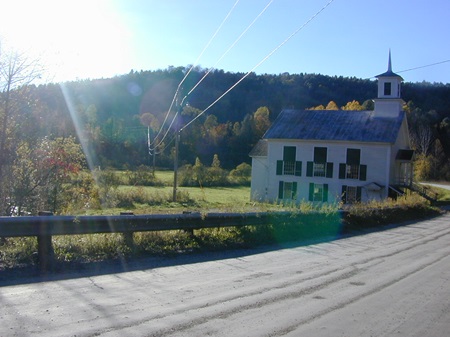
Fast, affordable Internet access for all.

CVFiber continues to make progress in deploying affordable fiber to long-neglected rural areas in Vermont, as the state’s effort to embrace CUDs (Communications Union Districts) as a cornerstone of bridging the digital divide also pays dividends.
In late 2022 CVFiber broke ground on an ambitious plan to build a 1,200-mile fiber-optic network to bring affordable gigabit broadband access to 6,000 rural Vermont addresses deemed underserved by commercial broadband providers.
According to an October announcement by the CUD, its first customers have been connected in the central Vermont town of Calais, with construction ongoing in nearby Middlesex, East Montpelier, and Worcester.

“We are enthusiastic about our progress as we bring high-speed Internet to central Vermont communities,” CVFiber Executive Director Jennille Smith said. “The progress that we have made and the impact that we’ve been able to achieve to date could not have been accomplished without the unwavering commitment from our partners. We are optimistic as we expand to other service areas.”
CUDs have proven to be a useful way for municipalities to band together to cooperatively build broadband projects that may have been financially and logistically impossible to try alone. Vermont CUDs can legally fund needed broadband expansions through debt, grants, and donations—but not taxes, though they themselves are tax-exempt nonprofits.
CVFiber’s fiber deployment is expected to cost $60 million, $27 million of which is being paid for by federal grants made possible by the American Rescue Plan Act (ARPA). The remaining cost is expected to be funded by network revenue, loans, and future grant opportunities.
The company’s service tiers are a revelation for rural subscribers long left out of reach of next-generation–and in many instances current generation–broadband services. In fact, they’re notably faster and cheaper than services in many major metropolitan areas.
In deployed markets, CVFiber provides users with access to symmetrical 100 Mbps (megabit per second) service for $79 a month; symmetrical 500 Mbps service for $99 a month; symmetrical gigabit service for $129 a month; and symmetrical 2 Gbps service for $199 a month. The CUD’s service does not have usage caps, hidden fees, or long-term contracts.
“We encourage our neighbors to check availability on our website, cvfiber.net, to see if their address is eligible for our locally managed, world-class Internet service,” Smith states.
Data from the Vermont Department of Public Service indicates that as of 2022, 65.5 percent of Vermont households lack access to broadband at speeds of 100 Mbps or greater. The state is currently ranked 30th in the nation in terms of broadband speed and availability.
Vermont first created the legal framework for CUDs to operate in 2015. In 2021 the Vermont legislature passed Act 71, which ensured CUDs would play a key role in expanding affordable fiber access. In the seven years since the state first took action, more than a dozen CUDs have been established or are currently under development. And they’re all well positioned to take full advantage of an historic wave of state and federal broadband subsidies.
Inline of Calais Town Hall courtesy of Flickr user Greg Sampson, CC BY-NC-SA 2.0 DEED Attribution-NonCommercial-ShareAlike 2.0 Generic
